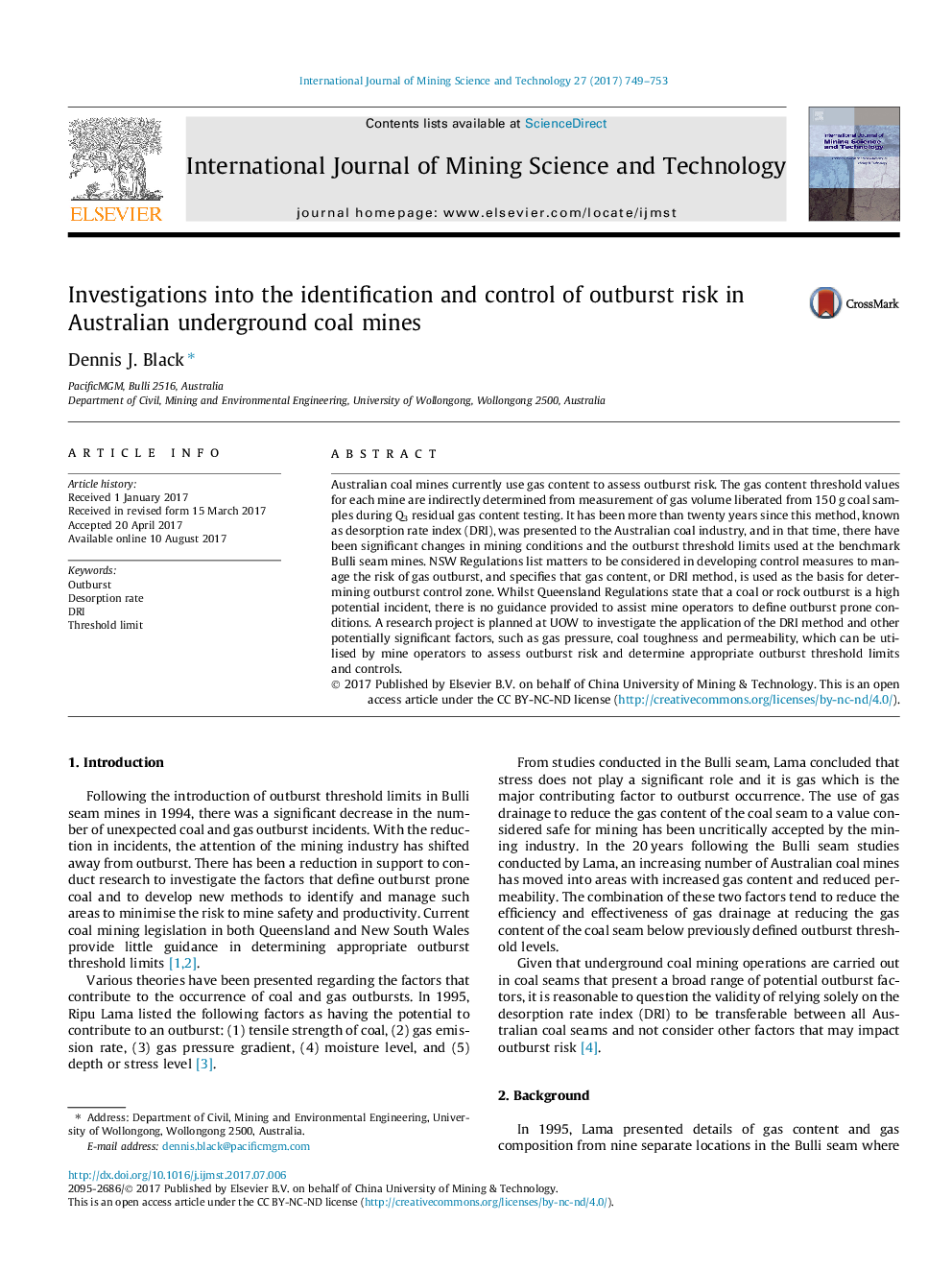| Article ID | Journal | Published Year | Pages | File Type |
|---|---|---|---|---|
| 4921738 | International Journal of Mining Science and Technology | 2017 | 5 Pages |
Australian coal mines currently use gas content to assess outburst risk. The gas content threshold values for each mine are indirectly determined from measurement of gas volume liberated from 150Â g coal samples during Q3 residual gas content testing. It has been more than twenty years since this method, known as desorption rate index (DRI), was presented to the Australian coal industry, and in that time, there have been significant changes in mining conditions and the outburst threshold limits used at the benchmark Bulli seam mines. NSW Regulations list matters to be considered in developing control measures to manage the risk of gas outburst, and specifies that gas content, or DRI method, is used as the basis for determining outburst control zone. Whilst Queensland Regulations state that a coal or rock outburst is a high potential incident, there is no guidance provided to assist mine operators to define outburst prone conditions. A research project is planned at UOW to investigate the application of the DRI method and other potentially significant factors, such as gas pressure, coal toughness and permeability, which can be utilised by mine operators to assess outburst risk and determine appropriate outburst threshold limits and controls.
